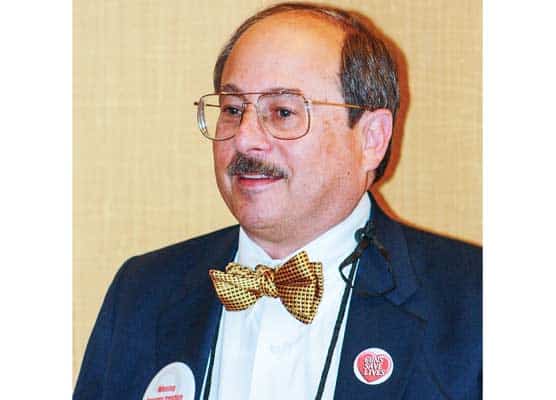Pickin' A Pair
What Would Gun Buying Circa 1880 Be Like

This frontiersman seems proud of his firearms. The rifle is a Sharps Borchardt Model 1878 and the revolver is a Colt Peacemaker (left).
These two cowboys are well armed by the standards of 1880. Revolvers in each holster are Colt Models 1878.
The standing fellow has a Winchester
Model 1873 and the kneeling one has a Sharps Model 1874 (right).
Let’s say the time frame is circa 1880 and you are a cowboy, prospector, trapper, teamster or whatever with some currency and coin in your pocket. The location is the American Wild West but let’s narrow it down to Arizona or New Mexico. Those locales were still full of danger from Apaches, border-crossing Mexican bandits, or plain old gringo ones. You need to go armed.
Due to the endeavors needed to gain that cash, you have been away from civilization for a while, so walking into a well-stocked gunsmith shop or hardware store is almost a new experience. Also your old .44 Colt conversion revolver is worn and loose. Likewise your 1862-vintage Henry .44 Rimfire repeater is now obsolete. Besides, it never was powerful enough to suit you anyway.
You’re a “gunny sort” interested in firearms and shooting enough that you’re knowledgeable. So, what sort of guns likely setting in the racks of a 1880’s store would you trade your old timers in for?
First, let’s see what was available
Colt handguns were the most prevalent. The Peacemaker was nearly old news by 1880, but when you left civilization it was only available as .45 Colt or .44 Henry Rimfire. Off-the-shelf barrel lengths were 7-1/2 inches (always) 5-1/2 inches (from 1875) or the brand new 4-3/4 inch. Finishes had always been full nickel-plate or blue with color case hardened frame and hammer. Now, however, it is also wearing an etching on the barrel’s left side saying “Colt Frontier Six-Shooter.” The store owner says that means it fires .44 WCF—the same round as used in Winchester ’73’s. “Not a bad idea,” you think.
During your away time, Colt has developed some other options. There is such a thing now as double action—which means the hammer doesn’t need cocking for every shot. You can also fire the revolver simply by pulling the trigger. They have a little one called the Model 1877 DA in .38 and .41 calibers or a big one named Model 1878 DA for the big .45 and .44 rounds of the single action. That’s a lot to think about.
There’s more. Remington is trying to get their share of the market with a single-action .44—the Model 1875. It has a web beneath the barrel, which could be good for “knocking heads” if such might be in the offing. It shoots the same .44 WCF as Colt’s big sixguns, plus another special one called .44 Remington.
You were aware of Smith & Wesson revolvers long before your wilderness hiatus. They seemed overly long with their 7- and 8-inch barrels and, being top break, felt a bit fragile for packing day in and day out on horseback. Of course, they can be loaded and unloaded quicker than other single actions. However, now there is a new S&W to look over. It has a 6-1/2-inch barrel and all the ones in the store are .44 Russian chambered. It is called the New Model No. 3.
The next handgun shown to you is truly unique. It loads traditionally through a port on the frame’s right side but that’s where tradition stops. To unload it, a button on the bottom of the frame is pushed, the 3-1/2-inch barrel twisted 90 degrees and then pulled forward. All the fired cases will fall free but those still containing bullets stay. Then the gunsmith really shakes you up. He pushes another lever and the barrel comes completely off! He reaches into the counter picks up a 7-inch barrel and slips it right on. The entire move takes less than 10 seconds.
You are advised that the switch barrel system is a good selling point. You can belt carry it openly with the long barrel when out of town or concealed with the short barrel when in town.
This oddball of a sixgun is called a Merwin & Hulbert Pocket Army. It only comes as .44 caliber but has this odd stamping, “Calibre Winchester 1873.” The fellow behind the counter has to tell you that means .44 WCF. If not marked like that it takes a special .44 M&H. And like the big Remington, this Pocket Army was designed by someone who figured hand-to-hand combat might be expected because the grip comes to a wicked looking point. The wicked-looking point the gunsmith calls a “skull crusher.”
What about rifles?
There is so much to mull over with handguns that you turn to rifles while all this information coalesces in your mind.
There’s not nearly as much new on that scene to befuddle new buyers. Winchester is still the top name. There have been Winchester Models 1866 and 1873 available for years. The first is no advantage over your old Henry except for the wooden forearm and a loading port on the frame’s right side. The ’73’s are fine rifles with the .44 WCF being reloadable and packing at least 12 grains more powder than the old .44 Henry Rimfire.
You have heard about the new ’76 Winchester with its bigger cartridges—.45-60 and .45-75 and rumors of more options coming, but that thing is heavy—10 pounds if it’s an ounce! And too, when you look closely at those supposedly big cartridges they are not so impressive. They only shoot 300- and 350-grain bullets in the same order. Of course the 60- and 75-grain powder charges sound good. A ’76 is worth considering.
The store owner surprises you with a comment about the Sharps Rifle Company shutting its doors. How can that be? The name Sharps is synonymous with big-bore, long-range rifles. Well, the proprietor says, “The buff herds are gone, except for some up in Montana. So the Sharps rifle market is gone too. I’ve got some here in the racks but when they are sold there will be no more so I worry about getting spare parts.”
His good news is that Remington is still going strong. Several of their big No. 1 rolling block Sporting Rifles are there in the rack. Rounds as long as would fit into a Sharps such as .50-90 or .45-110 can’t fit in them because they hang up on the breechblock. Regardless, they are chambered for some fine cartridges like .44-77, .45-70 and .50-70.
Also the gunsmith says a fellow back east named John Marlin bought the Ballard patents for a single-shot rifle and has put it into production. Ballard actions are lever operated falling block designs so those rifles are now options too. Cartridge choices compare to the Remington and some are even more powerful.
With that jingle in your pockets you can afford any of these rifles and handguns. Perhaps setting in the saloon and sipping a cool beer will help clear your mind. Here are some considerations. If traveling northwards, a big single-shot rifle would be advisable. Besides a modest number of remaining bison, there are also elk and moose opportunities, not to mention grizzlies. The Remington rolling block chambered for any of the three cartridges mentioned would be good. Those rounds can be bought at most any outpost of civilization. That’s not something that could be said for the Ballard’s specific cartridges or even the Winchester ’76’s ones. Also, the rolling block only has about four moving parts compared to the intricate lock work in a Sharps for which there will be no new spares coming.
But, if you are satisfied to stay south where the largest game animals are deer and where the Apaches are still a force to be reckoned with, a Winchester ’73 would be perfectly adequate. Should it be a saddle ring carbine or standard rifle? There is also the musket version. It can be easily fitted with a sling in case there is plenty of walking in the future. The light weight of a carbine is attractive to horse travelers but the longer barrel and better sights of rifle or musket would better suit an experienced rifleman.
But, if you are satisfied to stay south where the largest game animals are deer and where the Apaches are still a force to be reckoned with, a Winchester ’73 would be perfectly adequate. Should it be a saddle ring carbine or standard rifle? There is also the musket version. It can be easily fitted with a sling in case there is plenty of walking in the future. The light weight of a carbine is attractive to horse travelers but the longer barrel and better sights of rifle or musket would better suit an experienced rifleman.
Now, what about the handgun? The Smith & Wesson and Remington are out because the first seems too fragile and the gunsmith confided in you that the Remingtons are not overly accurate. A Smith & Wesson New Model No. 3 would be perfect for a town marshal where gunsmithing services are available, as would be railway express if shipping it back to the factory for repairs was necessary.
The gunsmith says that Remington’s engineers must be idiots because the bores of their Model 1875’s as chambered for .44 WCF are only .425-inch, but their chamber mouths are .446-inch. Consequently, when fired, the bullets hit the barrel cockeyed and then tumble in flight. Evidently, they only took cylinders already bored for the .44 Remington round and then ran a .44 WCF reamer in them.
A Merwin & Hulbert .44 seems attractive, what with its novel design and spare barrel. However, practicality is a part of your persona. Who wants to keep track of a second barrel and pack around another holster too? Besides, just like the Smith & Wesson, what frontier gunsmith knows how to work on one or even has spare parts? The same is true of those new-fangled Colt’s with their tricky double-action mechanisms.
No, you realize an experienced shooter whose only means of transportation is a horse needs a Colt single action. Their lockwork is so simple even a country blacksmith make springs for them and they are robust. Heck, they were designed for the US Cavalry (no outfit is harder on firearms). So which Colt single action is right for you? The choice is easy: You want one with 7-1/2-inch barrel, nickel-plated finish and it has to be the Colt Frontier Six-Shooter. That’s because you have also decided to stay in the south so a Winchester ’73 rifle is going to be your long gun. (Who in their right mind would want to spend winters up in Montana or Wyoming?) The nickel finish is weather resistant and easy to clean after firing black powder and, of course, the further apart a handgun’s sights the easier it is to hit with them.
So, the gunsmith separates you from a goodly portion of your cash and sends you on your happy way to the town’s saddlemaker for a new holster and saddle scabbard. Perhaps when you settle down in one place you’ll even buy some of those new reloading tools and bullet molds for your .44 WCF’s.
Download A PDF Of The GUNS Magazine November 2014 Issue Now!







